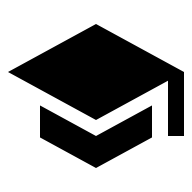Novel Insights Into Intermediate Filament Assembly Through Chemical Cross-Linking

Category
Ph D Defense
Date
2023-04-26 17:00
Venue
KU Leuven, Arenbergkasteel, Aula Arenbergkasteel, 01.07 - Kasteelpark Arenberg 1
3001 Leuven, België
3001 Leuven, België
Promovendus/a: Pieter-Jan Vermeire
Promotor(en): Prof. dr. Sergei Strelkov
Intermediate filaments (IFs) are essential constituents of the metazoan cytoskeleton. There are over 70 distinct IF proteins in humans linked to specific tissues and functions. IF proteins are capable of self-assembly into typical 10-12 nm wide filaments. The primary structure of all IF proteins includes the signature central ‘rod’ domain of ~300 residues which forms a dimeric α-helical coiled-coil (CC) composed of three segments (coil1A, coil1B and coil2) interconnected by non-helical, flexible linkers (L1 and L12). The rod is flanked at both sides by non-helical terminal head and tail domains. At present, the assembly process and molecular architecture of mature IFs is only poorly known, hence drastically limiting our capacity to rationalize the effect of numerous disease-related mutations observed in many IF proteins.The IF assembly is based on specific associations of the elementary dimers in two directions: the lateral (side-by-side) and longitudinal (head-to-tail). For cytoplasmic IFs, the first assembly intermediate is a tetramer which stays soluble in low ionic strength buffers at neutral pH. Upon increase of the ionic strength in vitro, the tetramers very rapidly associate laterally yielding so-called ‘unit-length filaments’ (ULFs). ULF formation happens within a couple of seconds, and it is followed by a much slower elongation step by longitudinal association of multiple ULFs. However, as of today, the exact 3D architecture of mature IFs is still a subject of debate. Different possibilities exist with respect to the arrangement of the tetramers in assembled IFs as well as the symmetry of the mature filament.
The soluble form of cytoplasmic IF proteins is a tetramer. The current structural models of the tetramer are based on early chemical cross-linking studies and assume a lateral association of two essentially straight, not flexible dimers. With this study we aimed at understanding the assembly principles of the tetramer and obtaining the most accurate atomic model of the tetramer, using a range of complementary approaches.
First, we attempted to crystallize the rod domain segments of the K8/K18 tetramer which corresponds to the antiparallel alignment of two coil1B dimers (known as the A11 association mode). All designed K8/K18 constructs were centered around coil1B and additionally included coil1A and N-terminal parts of the coil2. Although no crystals were obtained, these fragments served as a benchmark for future chemical cross-linking studies on full-length IF proteins. Both chemical cross-linking and small-angle X-ray scattering experiments for the K8/K18 fragments confirmed stable tetramers in solution which are based on the A11 association mode. In addition, our data showed that, aided by L1 & L12 flexibility, both coil1A and N-terminal part of coil2 can backfold onto coil1B.
In the next chapter, by examining a series of progressive truncation mutants, we show that the formation of an A11 tetramer is driven not only by the interaction of two coil1B dimers but also by the interactions made by the coil1A domains. Second, the novel, extensive set of chemical cross-links provides for the reconstruction of the complete atomic structure of the full-length vimentin tetramer. We conclude that the tetramer is synergistically stabilized by the interactions of the aligned coil1B domains, the interactions between coil1A and the N-terminal portion of coil2, and the electrostatic attraction between the oppositely charged head and rod domains. Our cross-linking data indicate that, starting with a straight A11 tetramer, flexibility of linkers L1 and L12 enables ‘backfolding’ of both the coil1A and coil2 domains onto the tetrameric core formed by the coil1B domains. Through additional small-angle X-ray scattering experiments we show that the elongated A11 tetramers dominate in low ionic strength solutions, while there is also a significant structural flexibility especially in the terminal domains.
In the last chapter, we studied the structure of the K8/K18 tetramer and assembled filaments. Our data confirms the observations made for the vimentin tetramer: several conformations of the tetramer co-exist thanks to the linker flexibility. In addition, chemical cross-linking experiments on vimentin ULFs as well as vimentin & K8/K18 mature filaments is ongoing.
Taken together, our work shows that the classical view of the structural models of the cytoplasmic IF tetramer needs to be adapted. Importantly, through combining cross-linking and small angle X-ray scattering studies, we establish that there is a range of 3D conformations of the tetramer in solution. Moreover, our chemical cross-linking data for the complete IF assembly and data from other techniques can be integrated to get a step closer to resolve the complete IF structure.
All Dates
- 2023-04-26 17:00
Powered by iCagenda







